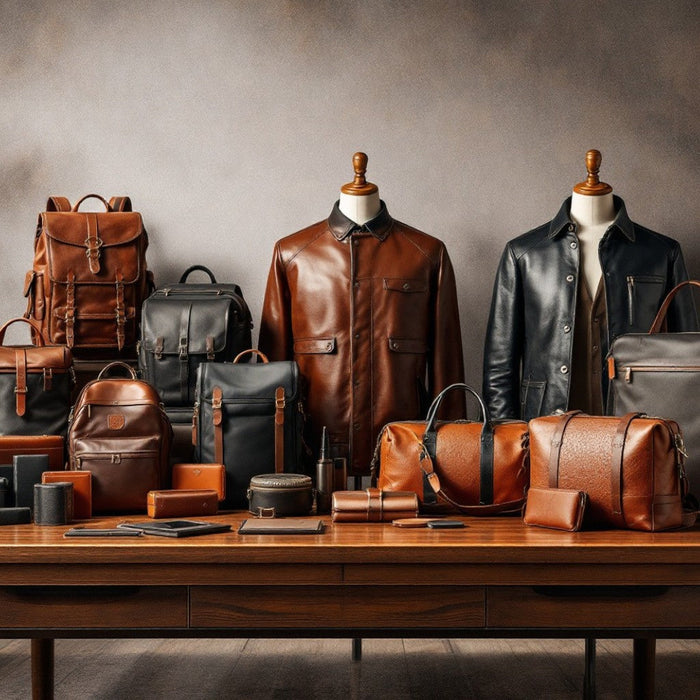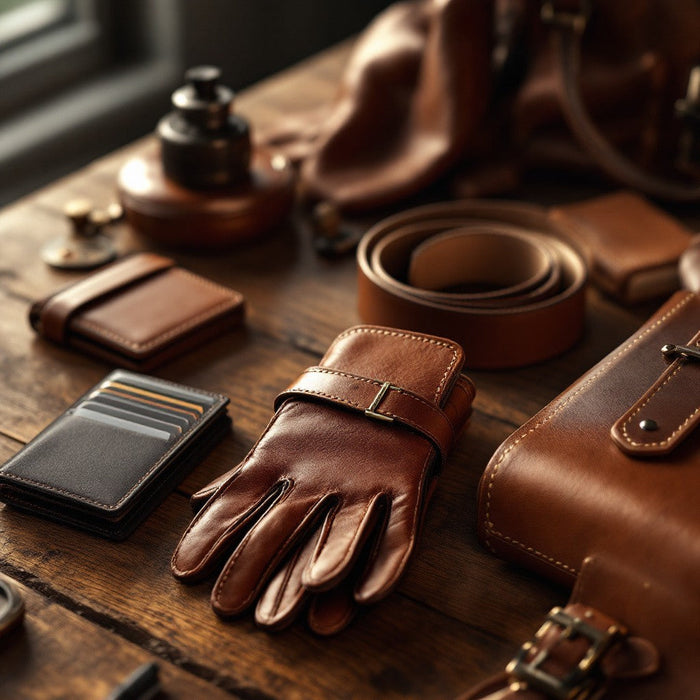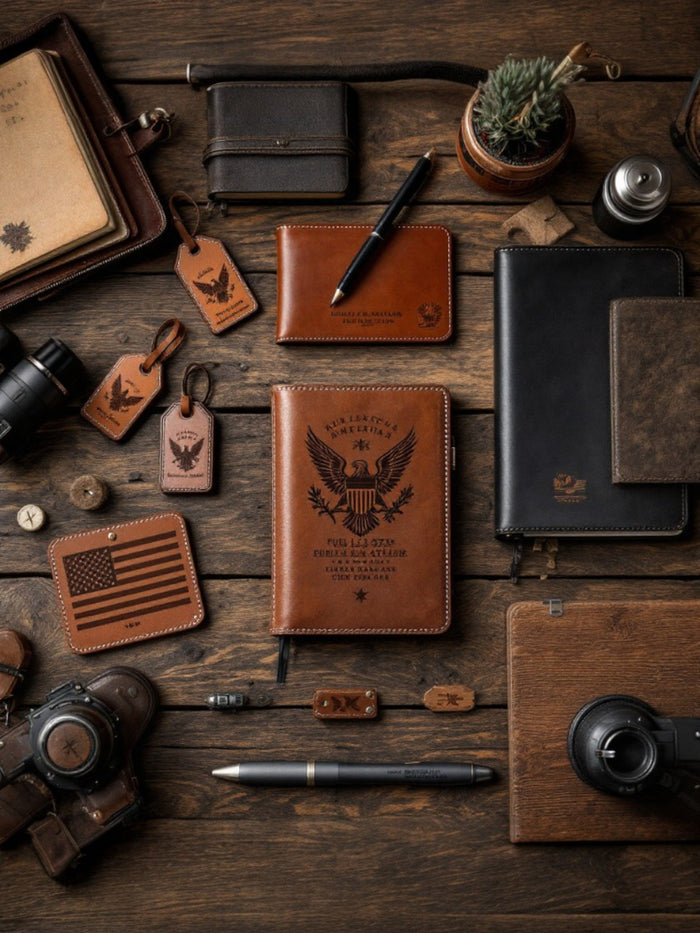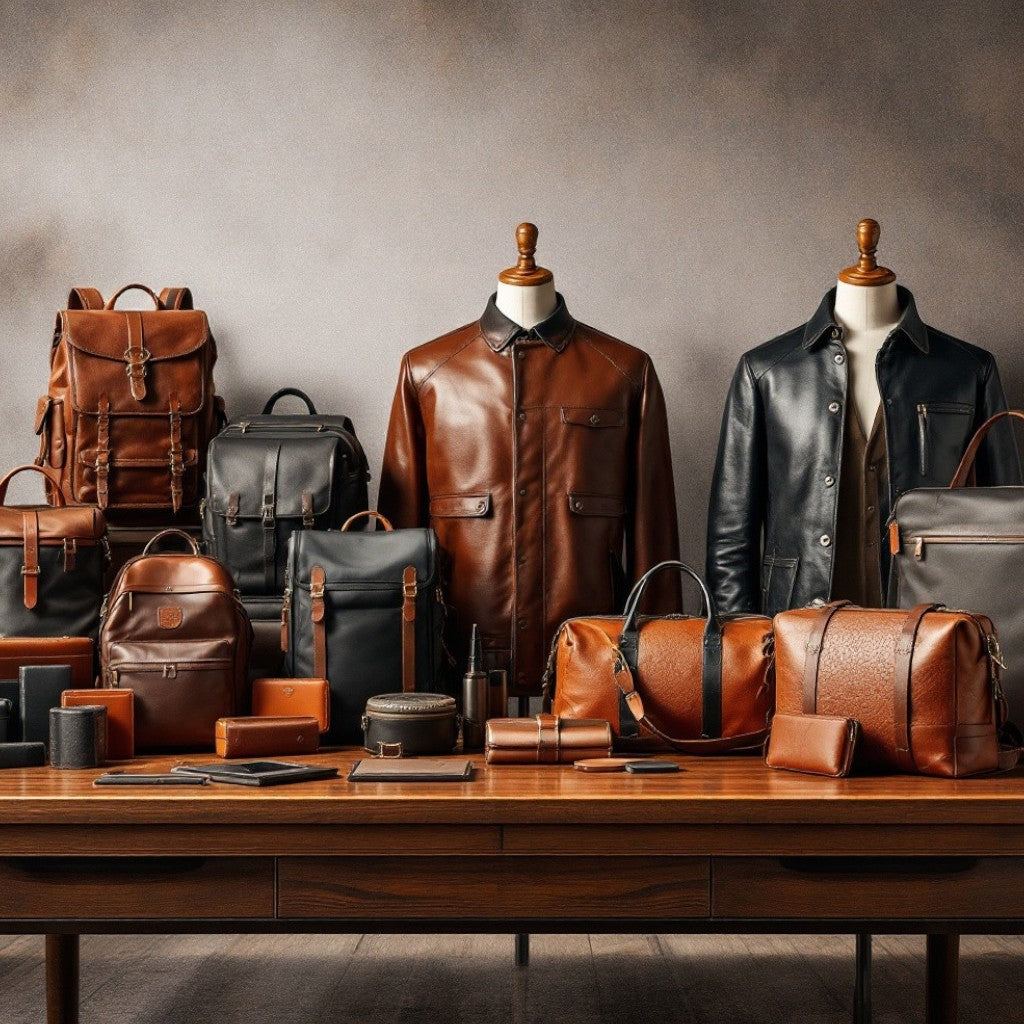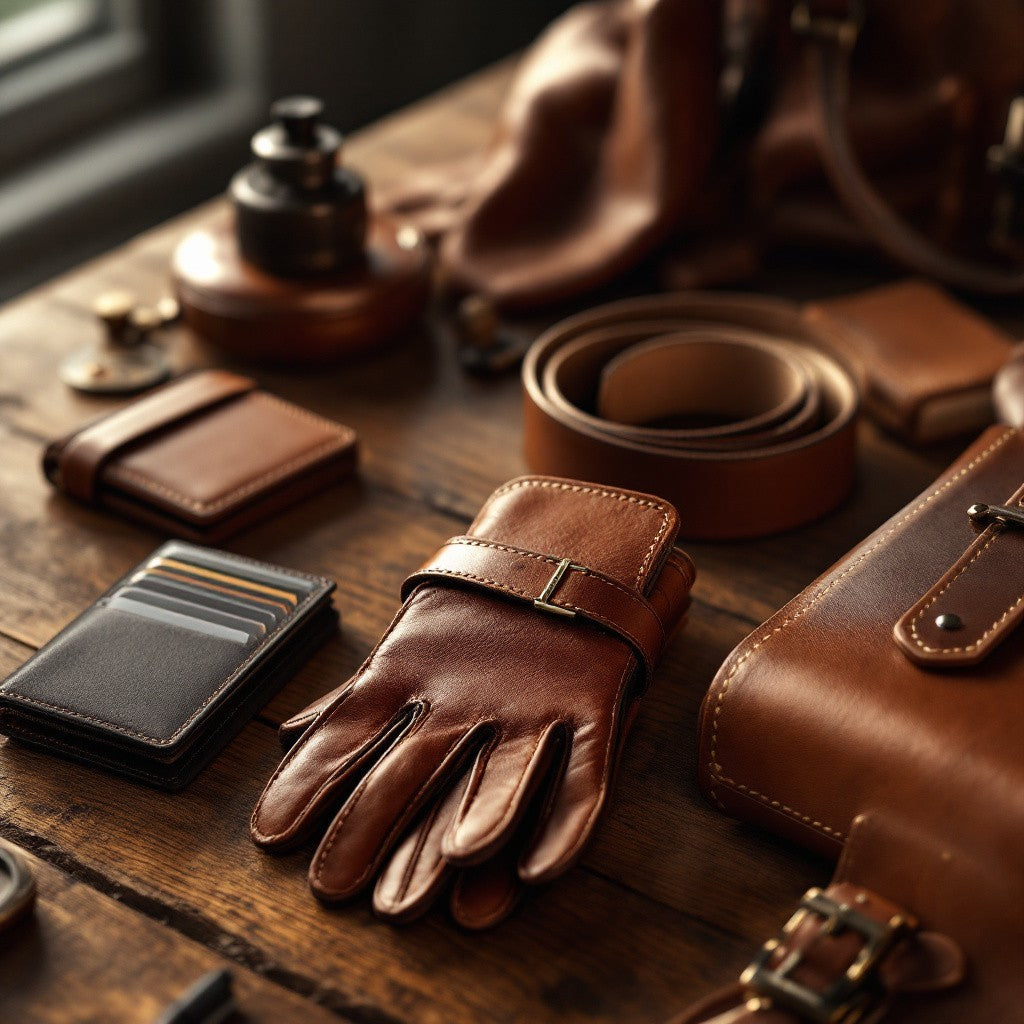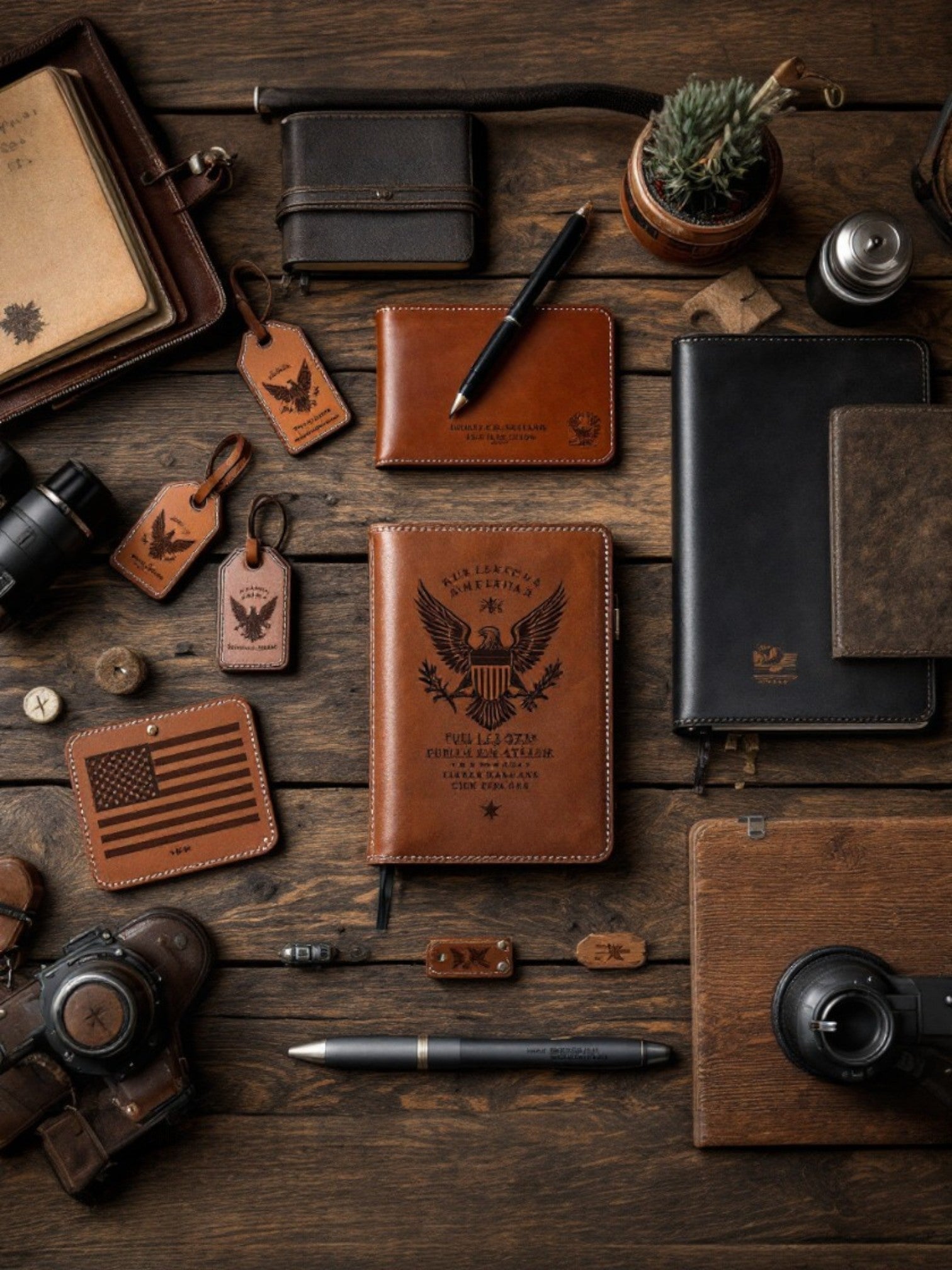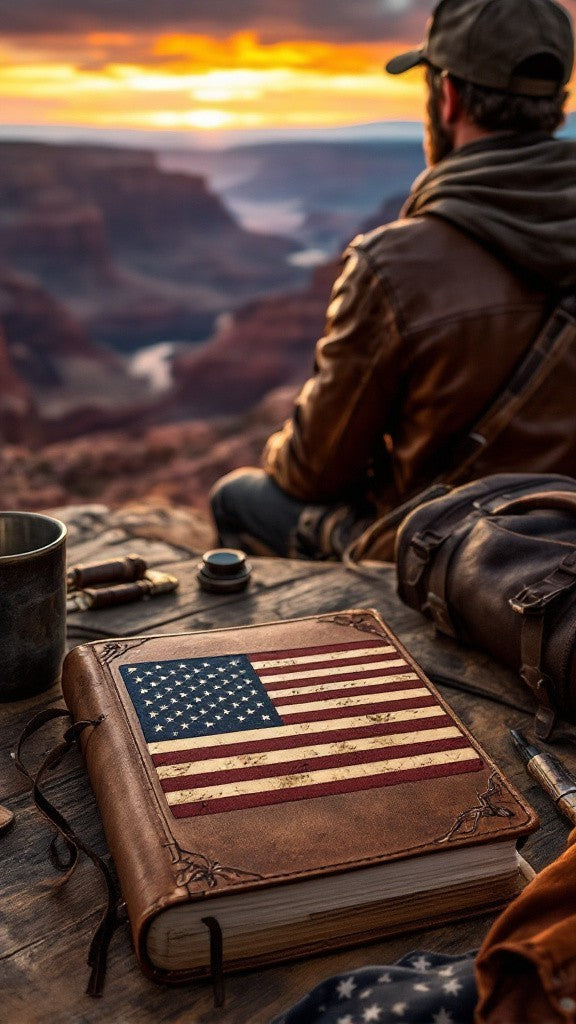
When Leather Tells Stories: The Art of Natural Patina Development
Share
There's something almost magical about watching a piece of full-grain leather transform over the years. Unlike synthetic materials that simply deteriorate, quality leather actually improves with age, developing what craftsmen call "patina" — a rich, lustrous surface that tells the story of every adventure, every workday, and every moment it's been your trusted companion.
At Wyoming Jack, we've seen countless customers return years later to show us how their leather briefcase has evolved from a crisp, uniform brown to a deep, complex tapestry of color and texture. Each scuff mark, each subtle color shift, each worn edge becomes part of the piece's unique biography.
Understanding Patina: Nature's Signature on Leather
Patina isn't damage — it's enhancement. When natural oils from your hands, exposure to sunlight, and the gentle friction of daily use interact with full-grain leather, they create chemical changes that actually strengthen the material while giving it depth and character that can't be manufactured.
Think of patina like the way a fine wine develops complexity over time. A brand-new leather wallet might be beautiful in its pristine state, but after six months of daily carry, it becomes something uniquely yours — softened in all the right places, darkened where your thumb naturally rests, and bearing the subtle impressions of your daily routine.
"The best leather goods aren't those that look perfect forever — they're the ones that age beautifully with you." — Master craftsman, Wyoming Jack workshop
The Science Behind Beautiful Aging
Full-grain leather's ability to develop patina comes from its intact surface layer — the part of the hide that was closest to the animal's hair. This top layer contains natural oils, tight fiber structure, and microscopic pores that allow the leather to breathe and interact with its environment.
When you handle your leather journal daily, the natural oils from your skin gradually penetrate the leather's surface. Combined with exposure to air and light, these oils create oxidation that deepens the color and adds richness to the leather's appearance.
Temperature fluctuations and humidity changes also play a role. A weekender duffle bag that travels from air-conditioned offices to sunny car trunks to mountain cabins will develop a more complex patina than one stored in a closet — and that's exactly as it should be.
The Role of Use Patterns
One of the most fascinating aspects of leather patina is how it reflects your personal habits. The corner of a leather desk pad where you consistently rest your wrist will develop a slightly different color and texture than the center. The handle of a leather travel bag will show the most dramatic patina development, creating natural highlights that no factory finishing could replicate.
Even something as simple as which pocket you carry your wallet in will influence how it ages. Front pocket carriers often see more dramatic patina development due to increased body heat and movement, while back pocket carriers might notice more defined edge wear patterns.
Accelerating Natural Patina (The Right Way)
While patience is key to developing beautiful patina, there are gentle ways to encourage the process without damaging your leather goods:
Regular Handling: The more you use your leather pieces, the more beautiful they become. Don't save your leather briefcase for special occasions — make it part of your daily routine.
Mindful Conditioning: Occasional conditioning with quality leather balm helps maintain flexibility while allowing natural patina development. Over-conditioning can actually slow patina formation, so less is often more.
Embrace the Elements: Moderate exposure to natural elements accelerates patina. A leather backpack used for weekend hiking trips will develop character faster than one used only for commuting.
Consistent Use Over Time: Rather than rotating between multiple similar pieces, consistently using one item allows it to develop a cohesive patina story. Your daily-carry leather crossbody bag will age more beautifully than five bags used occasionally.
Reading the Stories: What Different Patina Patterns Tell Us
Experienced leather enthusiasts can often guess someone's profession or lifestyle just by examining their leather goods' patina patterns. Here's what to look for:
The Executive's Briefcase
Deep patina along the handle and corners, with lighter wear patterns from consistent placement on conference room tables. The leather often develops a rich, burnished look from regular conditioning and climate-controlled environments.
The Craftsman's Tool Roll
Heavy patina development with distinctive wear patterns where specific tools rest. Oil stains that have integrated into the leather's surface, creating unique color variations. A leather knife roll used by a professional chef tells a completely different story than one used by a weekend cooking enthusiast.
The Traveler's Duffle
Varied patina from exposure to different climates and handling conditions. Luggage tags and strap adjustments create specific wear patterns. The bottom corners show the most dramatic aging from contact with various surfaces during transit.
The Artist's Portfolio
Gentle, even patina development with possible ink or paint integration (which actually adds to the character). Leather portfolios used by creative professionals often develop the most unique patina patterns due to exposure to various materials and environments.
Common Patina Myths Debunked
Myth: Patina makes leather weaker.
Truth: Proper patina development actually strengthens leather by creating a protective surface layer that becomes more resistant to water and wear.
Myth: All leather develops patina the same way.
Truth: Only full-grain leather develops true patina. Split leather, corrected grain, and synthetic materials may change color but don't develop the same strengthening characteristics.
Myth: Scratches and scuffs ruin patina development.
Truth: Minor surface damage often integrates beautifully into patina development, creating unique character marks that enhance rather than detract from the leather's appearance.
Myth: You can rush patina development with chemicals or aggressive treatments.
Truth: Artificial aging techniques create surface-level changes that lack the depth and durability of natural patina. They often compromise the leather's integrity.
Caring for Leather During Patina Development
The key to beautiful patina is supporting the natural aging process without interfering with it. Here's how to care for your leather goods as they develop character:
Clean Gently: Remove dirt and debris with a soft brush or slightly damp cloth. Harsh cleaners can strip away the natural oils that contribute to patina development.
Condition Sparingly: Over-conditioning prevents patina formation. For most pieces, conditioning 2-3 times per year is sufficient. Leather cleaning wipes can help maintain cleanliness between conditioning sessions.
Allow Natural Drying: If your leather gets wet, allow it to air dry naturally. Heat sources can cause cracking and uneven patina development.
Embrace Imperfections: That small scuff on your leather dopp kit from airport security? It's becoming part of your travel story.
The Psychology of Patina: Why We Love Aged Leather
There's a psychological comfort in owning something that improves with time rather than deteriorates. In our disposable culture, leather goods that develop beautiful patina represent permanence, quality, and the value of patient investment.
Many of our customers describe an emotional attachment that develops alongside the patina. A leather journal that's accompanied someone through career changes, personal growth, and life milestones becomes more than just an object — it's a tangible connection to their journey.
This emotional connection explains why leather goods often become family heirlooms. A grandfather's well-patinated leather belt carries stories in its surface that no new item could possess.
Patina as Investment: The Economic Value of Beautiful Aging
While we don't recommend buying leather goods primarily as investments, well-patinated full-grain leather items often maintain or increase their value over time. Vintage leather pieces with beautiful natural patina are increasingly sought after by collectors and enthusiasts.
The key is starting with quality materials and construction. A signature piece from Wyoming Jack, crafted from full-grain leather with quality hardware and construction, will develop more valuable patina than a lower-quality item that simply looks worn.
Creating Your Patina Timeline
Understanding the patina development timeline helps set realistic expectations for your leather goods:
First Month: Initial softening begins. Edges may show first signs of color deepening from handling.
Three Months: Noticeable color variation develops in high-contact areas. The leather begins conforming to your usage patterns.
Six Months: Distinct patina patterns emerge. The leather's character becomes uniquely yours.
One Year: Rich, complex coloration develops. The piece has clearly "broken in" to your lifestyle.
Five Years and Beyond: Deep, lustrous patina with layered color complexity. The leather has developed maximum character and durability.
Choosing Leather for Optimal Patina Development
Not all leather goods are created equal when it comes to patina potential. When selecting pieces for their aging characteristics, consider:
Leather Grade: Full-grain leather offers the best patina development. Our best-selling items are specifically chosen for their superior aging characteristics.
Color Choice: Natural and lighter brown leathers show patina development most dramatically, while black leather develops subtler but equally beautiful characteristics.
Construction Quality: Well-constructed pieces with quality stitching and hardware will age gracefully rather than simply wearing out.
Intended Use: Consider how you'll use the item. A leather mouse pad will develop different patina characteristics than a leather luggage piece.
The Future of Your Leather's Story
Every piece of quality leather you own today is writing its story through patina development. Your expedition duffle isn't just carrying your gear — it's documenting your adventures in its developing surface.
The beauty of patina is that it's never truly finished. Even decades-old leather continues evolving, adding new chapters to its visual story with each use. This ongoing development is what separates true leather craftsmanship from temporary fashion accessories.
Consider documenting your leather's patina journey with photos. Many customers enjoy comparing their pieces' evolution over months and years, creating visual timelines of their leather's development.
Beyond Individual Pieces: Building a Patina Collection
Serious leather enthusiasts often build coordinated collections that age together, creating visual harmony as pieces develop complementary patina patterns. A corporate gift set used consistently will develop cohesive aging characteristics that enhance the professional image.
When building your leather collection, consider how different pieces will interact with your lifestyle. Items used in similar contexts will develop related patina characteristics, while pieces used in different environments will each tell their unique stories.
The patina development process transforms functional leather goods into personal artifacts. Each piece becomes a tangible record of your experiences, choices, and daily routines. In a world of planned obsolescence and disposable goods, choosing leather that improves with age is both a practical and philosophical statement.
Whether you're just beginning your relationship with quality leather or you're already watching your favorite pieces develop beautiful patina, remember that you're participating in a tradition that spans millennia. The same processes that created the beautiful aged leather in museum collections are happening right now with your daily-carry items.
Visit our about us page to learn more about Wyoming Jack's commitment to crafting leather goods worthy of a lifetime of beautiful aging, or explore our complete collection to find your next patina partner.

